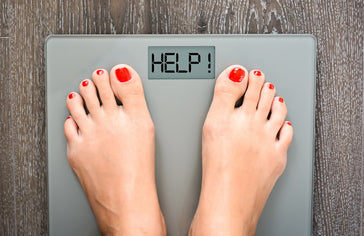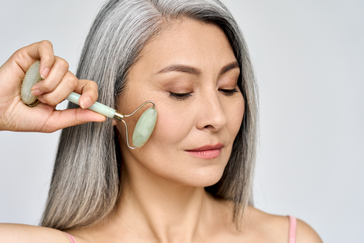The Ultimate Guide to HIIT
Posted by Support CoBionic on
Welcome back, everybody. My name is Becky Williams. I am the health coach here with Sprightly Soul, and I am back with another bonus video for you. It is week 29, and I'm gonna be talking about HIIT workouts today. So this is High Intensity Interval Training.
Now, I'm gonna explain a little bit about what HIIT training is or what the exercise is. It's a buzzword. I know you heard it, lots of people do it. So I'm gonna talk a little bit about what it is, why it's important to be able to incorporate this exercise into your daily routines, a couple benefits of it, and then I'm gonna tell you how to create your own routine. So if you're wanting to build muscle, then you need to cause muscle damage and metabolic stress. So by like lifting weights or strength training, you can cause a buildup of damage, which will provide precisely the stimulation that you need to trigger your muscle growth during your resting time.
All right, so that's what HIIT is. It's about burst of energy and then rest, but I'm gonna talk about that more in a second. So to lose fat, enhance your fitness, and enhance your overall health, you do need to also use cardiovascular training. So all of this works together in a beautiful dance to be able to get your body in tip-top shape. So what is cardio, right? Cardio is any type of training that's gonna involve exerting yourself for an extended period of time, running long distances, jogging, things like that. Those are really the most popular forms of cardio training. Not far behind that though are swimming, cycling, skipping, rowing, jumping jacks. Think about PE at school, okay? These types of things, these are gonna be our electives in college. These are gonna be a lot of the cardiovascular type of exercises.
So traditionally, this kind of cardiovascular training has been a steady state, meaning you put on your running shoes, you step out the door, and you run for like 40 minutes to an hour, that's the traditional. But it's steady state because you're maintaining a steady level of exertion through the course of the exercise. You're running the same pace for long distance, okay? In this case, you're jogging. In my example, you're jogging at a set pace and you're maintaining that pace, okay? So don't think stopping, starting. This is, in general, you would be continuing. So for a long time, this was really thought to be the best way to burn the maximum amount of calories and improve fitness, and there was a good theory behind it.
And you know, as to why this is the case. Specifically, it was thought that there was an optimal fat burning zone and that this could be found at roughly 70% of your maximum heart rate. So you see a lot of people wearing Fitbit watches and different Apple watches and things like that to track their heart rate. This is why, because they want to get in that good burning zone, that fat burning zone. This does make sense in theory, seeing as faster than 70% of your MHR, your maximum heart rate, would put you past your anaerobic threshold. So in other words, you'd be running so fast that you wouldn't be able to rely on your aerobic energy system for fuel. You simply couldn't burn fat quickly enough, and so you would be forced to rely on stored energy in your muscles as ATP and glycogen. Okay, you with me? Alright.
So HIIT completely turns this concept on its head. In HIIT, you actually alternate between bursts of intense exertion, like sprinting, and periods of relatively low intensive exercise, like jogging or power walking. This way, you're switching from an anaerobic energy system to an aerobic system and back. So you're switching back and forth. You're switching between burning energy stored in your blood and muscles and energy stored as fat. Okay, so you're switching between those two systems.
So let's first consider how the body gets energy and manages that energy during exertion. So in order to exercise, the body needs energy, right? So this energy is going to come from a source known as ATP, which is described in scientific circles as the energy currency of life. This substance is a nucleotide made up of three phosphagen molecules bonded together by a powerful force. That's what the name literally means. Okay, tri means three, phosphate meaning phosphagen. All types of energy in the body are ultimately converted into ATP. So when you eat a big cake, the sugar and the glucose, they ultimately need to be converted into this molecule before any of it can be used in your muscles or your cells. So in real terms, any one mole, that's how it's measured, of ATP energy will provide 7.3 calories. So it could just take over 190 micromoles to move your index finger enough to click a button on a mouse or computer, and this would equate to around 1.42 calories. Isn't that neat?
So the power in the substance doesn't come from the phosphagen itself, but from the powerful bonds that bind it together. And it's when these bonds break that unleash the energy the body can utilize. Think about what I said in the beginning about muscles being torn down. So an athlete needs to be able to supply their muscles with a lot of ATP. Then, in order to perform the necessary movements for running, weightlifting, whatever, all of these have to work together.
So let's recap. Here are some benefits of HIIT. This is why you would want to do it.
- Quicker than conventional steady state cardio.
- You're able to burn a much greater amount of calories in a shorter amount of time.
- You're able to create an afterburn effect, which in for increased metabolism throughout the day. So basically, when you're done working out, your body still continues to burn the fat, alright?
- It's effective in increasing energy levels by improving the number of mitochondria. That's really good.
- Effective in protecting muscle against deterioration for a leaner, harder physique.
- It's just excellent for your overall health.
So you're saying, alright, great. HIIT sounds good. I want to try it. So how do you get started?
Alright, just a quick note, before beginning any intensive training exercise or any exercise routine, it's always a good idea to consult with your primary care physician to ensure that you're healthy enough to exercise. Please make sure that you've been cleared by your doctor to work out before moving forward. You don't want anybody getting hurt or anybody doing something that's not going to feel good for their body. Alright, so before you start pushing yourself to a cardiovascular limit, it's a good idea to first build up a basic level of fitness. This is important for your ability to stick with an intense HIIT workout.
So a mistake that a lot of people make is launching straight into their training, hoping they'll be able to keep up a pace that is far above what they would find comfortable. So that's just their idea. I'm gonna jump in, it's gonna be hard, but I'm gonna do it. The belief is that you need to be pushing beyond your comfort level in order to lose the weight, but what actually happens is you end up hating exercise and dreading workouts. This is me. This is what I used to do. I joined the gym, I'd pick out the classes that I wanted to do and I'd start doing it and then just burn out, man. I just did not want to do it because I just hated it. I dreaded working out and that's why I choose to do more low intensity walking and things like that. And then you can do, I'm working my way into HIIT. I'll be honest, I don't do it often right now, but after doing the research and everything about this, I mean, it sounds like a pretty good gig. So I will probably be adding this into my workouts as well.
So you know, you're not liking exercise, you're not wanting to move, and so the result is that you find yourself putting it off and unable to make excuses. You're making it able to make excuses and just skip workouts altogether. So in no time at all, your training falls by the wayside, you give up, you say you hate exercise, something's always more important, right? Alright, so how do you build up a basic fitness level that you don't hate? The answer is actually to start with steady state cardio, which is what I talked about in the beginning. So you're gonna use a gentle pace to begin and then you just build from there, alright? You don't have to jump in all the way and be doing a full, you know, intense workout with this. You have permission, give yourself permission to start slow and build it up.
So you can begin with running or cycling, but don't aim for a long distance or an all-out sprint right away. Instead, just aim to enjoy the act of the movement. So just enjoy that you are honoring your body by getting movement in. Sit out with some comfortable shoes, hold on for a steady pace for about half an hour. If it becomes painful, please stop, okay? Pushing through is not what you need at this point because you're gonna be building up, alright?
So you're gonna do this once a week and over time you'll find that you'll start going faster and further without even trying. Most importantly, you're not gonna risk exhausting your body, injuring yourself by over training or hating workouts. I know that this can be frustrating at first if you're hoping to get into shape right away, but what is very important is to be disciplined with yourself and to create healthy habits. That's where change happens.
Change does not happen with a new plan. Even though I'm advocating here for HIIT workouts, this is not what's gonna make the difference. The difference is gonna be healthy habits and change over time. That's what creates these rhythms for you. A lot of people think that getting into great shape is all about being disciplined enough to keep training. It is, yes, but just as important it is to be patient, to build a level of a basic strength before you approach any higher intensity trainings. So you're gonna build your strength, you're gonna build your stamina slowly, and then you can look at adding actual HIIT workouts from there.
Again, gentle, start gently people, okay? Whatever you do, make sure that you recognize the importance of combining your HIIT workouts with the right lifestyle. If you want to maintain your fat loss and muscle building, you should be looking at eating a diet of whole, minimally processed foods like the menus that we have here that also include high-quality proteins and healthy fats. And we've already got that mapped out here, no matter which eating plan that you're picking from us, you will have all of those things. All right, you need this to have the power to push through a workout and avoid burning out. You also need to stay hydrated, drink your water, and get lots of sleep. Don't throw the baby out with the bathwater, okay?
HIIT is amazing, there is no doubt, but it's only one piece of the puzzle. Steady state cardio still has its advantages and is excellent for improving your resting heart rate. Likewise, you can use regular weight training in order to build muscle, okay? So instead of falling in love with each new training method, forgetting your old routines and all of that, look at how you can combine new information with what you already know and just create something that's even more effective for your unique body.
So, what about a Tabata routine at the end of your workout as a finisher? Throw in some steady state cardio into your routine, okay? Find what works for you. You don't have to do something just mapped out exactly like you get on Pinterest or what-have-you and they have a perfectly crafted HIIT workout. You don't have to do it like that, in that order, that way. It's just a suggestion. Do it so that you enjoy it and that you love this time of honoring your body and taking care of your body. Experiment, find what works for you. Just make sure your routine is sustainable. This is about habit change. Ask yourself, honestly, if the routine that you've devised is something you can stick with indefinitely.
Remember, although HIIT is all about first and start, whole body health is a perpetual marathon. It is not a sprint. So, you need to stay focused. You need to find something that is sustainable for you, something that you enjoy, something that helps to spark joy in your life, that makes you want to get up and put those shoes on and go and get your body moving. Alright, thank you so much. This is Becky Williams. I'll be back another week, next week coming, for another bonus video. Thank you. Have a great week. Bye, guys.





